In preparation for viewing today’s total solar eclipse, Ted spent a lot of time poring over forecast models and weather forecasts for our area. In addition, he checked out what the TV weatherpersons were saying and watched their “futurecasts” for rain and cloud cover. The bottom line: picking a viewing site was a tough call to make.
Last night, it looked like it didn’t matter where we went in the path of totality along I-70. The forecast for the entire area predicted hot and humid weather with highs in the 90s and a 20 percent chance of thunderstorms. We made the call to go with Plan A: Pick up Kari and Dylan, then drive to Columbia, MO (95 miles west of St. Peters) to meet Kathy and Annette for a family eclipse event. Sky and Teddy opted to stay home and participate in the classroom eclipse activities at school.
When it was time to leave this morning, the weather maps showed a clear, cloud-free strip all across the state on I-70, so we headed for Columbia. Unfortunately, the farther west we drove, the more cloudy it became. The radar showed a large thunderstorm developing in Kansas City and moving eastward along I-70 toward Columbia. By the time we got to Columbia, we knew we wouldn’t be able to see the eclipse through the cloud cover. Checking the radar maps again, we found a clear area around Warrenton (60 miles back eastward) and knew we had time to backtrack before the eclipse started. Kathy and Annette were willing to drive the additional distance, so we headed down the highway. Warrenton turned out to be a good choice. We had a shady area for our picnic food, lots of sunny areas for eclipse viewing, and a bathroom nearby.
Ted and I have seen two partial solar eclipses (1970 and 1994). Both were 98-99 percent total, but the light only dimmed; it didn’t get dark. During the two minutes of totality today it didn’t get as dark as night; it was more like deep dusk, just before full darkness. Still, we heard birds singing and cicadas chirping, the lights in the park came on, and there was a slight breeze (a.k.a. solar wind). We saw the 360-degree “sunset” all around us as the sun’s rays shone on the horizon from behind the moon. The temperature dropped a few degrees–enough to notice that we were more comfortable than we had been in the 94-degree sunshine. We didn’t notice stars with our eclipse glasses on, but one of the videos I took shows lots of stars. The most amazing sight during totality was the sun’s corona. It was a brilliant white against the black circle of the moon–like sparkling diamonds in the sky. There was an audible gasp from the people in the park when the corona became visible. Unfortunately, my camera isn’t good enough to take a clear picture of the corona. Check with NASA for that view.
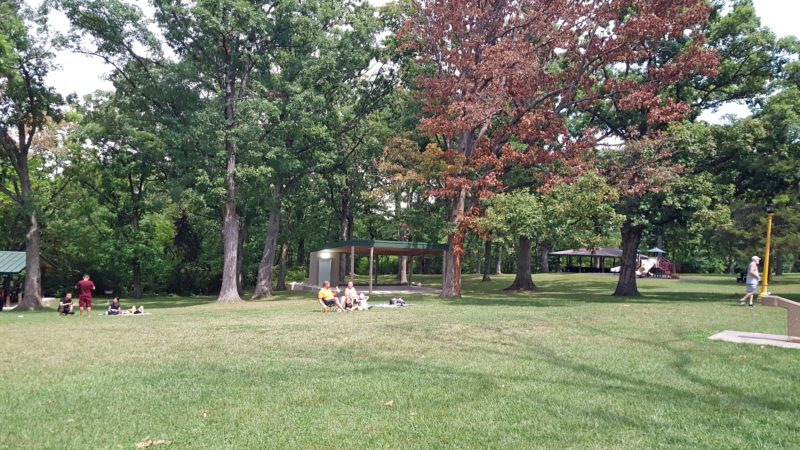 We went to Dyer Park in Warrenton and were joined by about 15 other people.
We went to Dyer Park in Warrenton and were joined by about 15 other people.
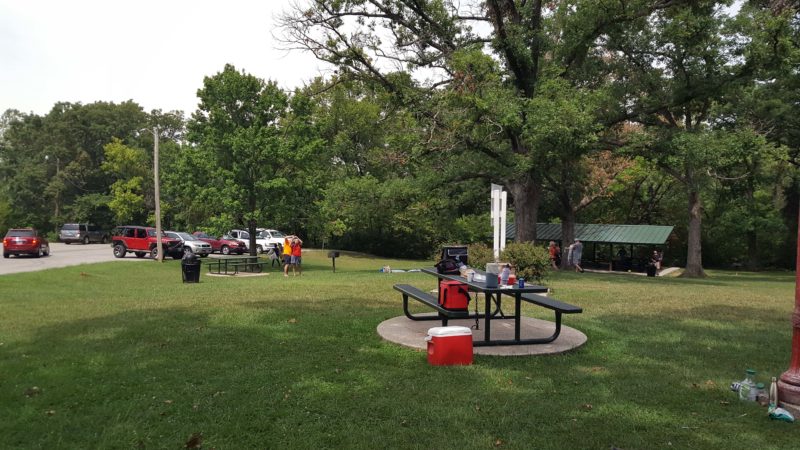 We set up our picnic food at a table in the shade (it was in the 90s), but laid on blankets in the sun and walked around looking upward as we ate.
We set up our picnic food at a table in the shade (it was in the 90s), but laid on blankets in the sun and walked around looking upward as we ate.
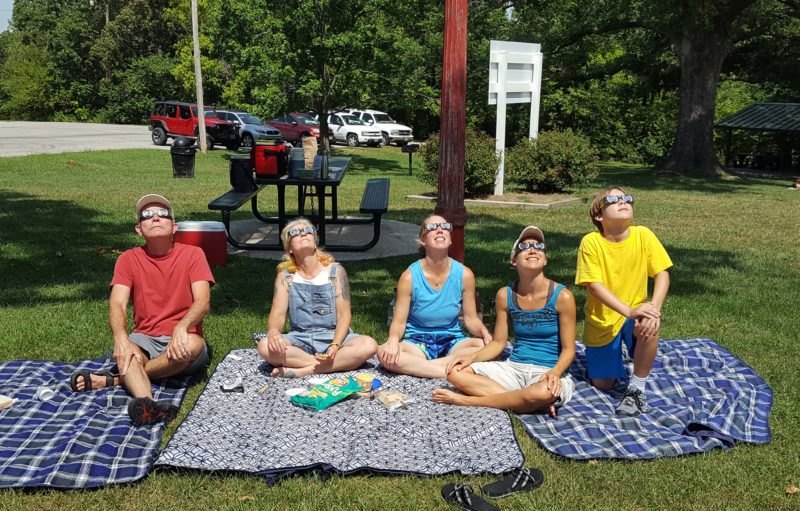
Our group of eclipse viewers.
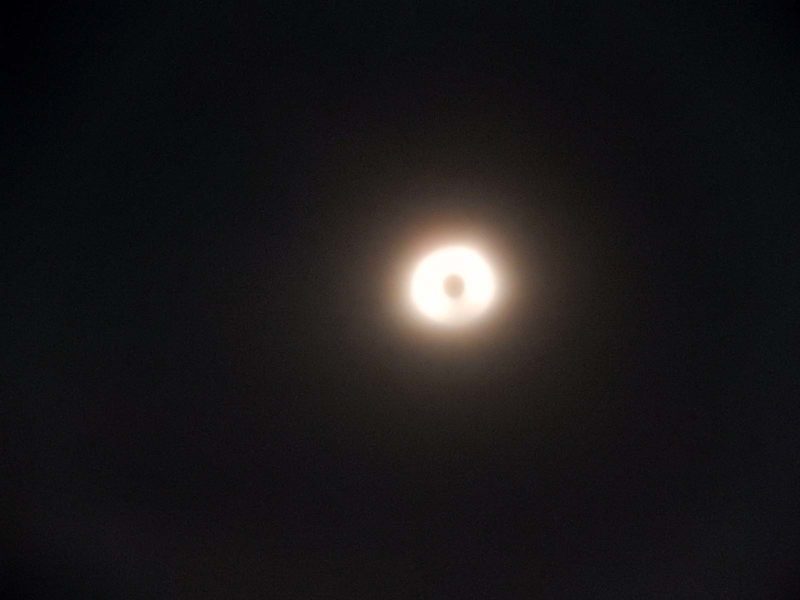
This is one of my pictures of the total eclipse and the sun’s corona. The dark spot in the center is the moon.
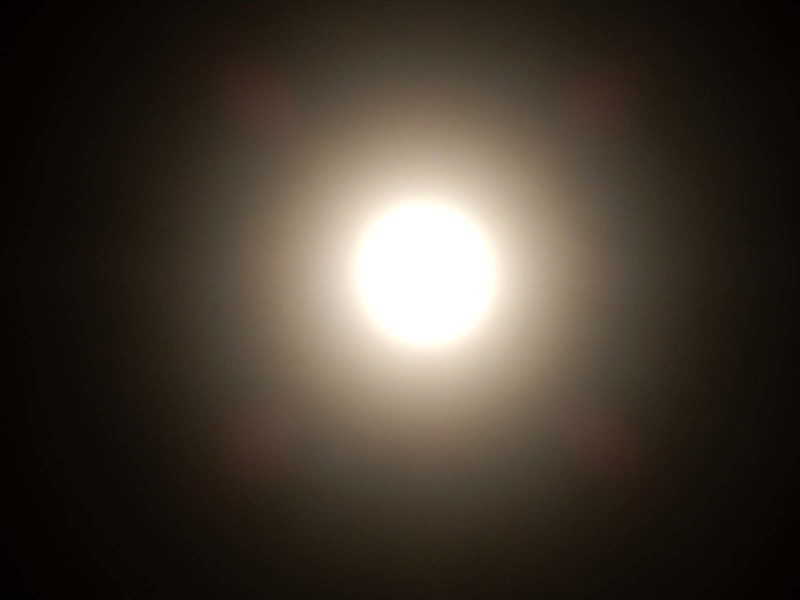
Here is another photo of the total eclipse. Even during totality, the sun’s corona is so bright, it overlit my picture.
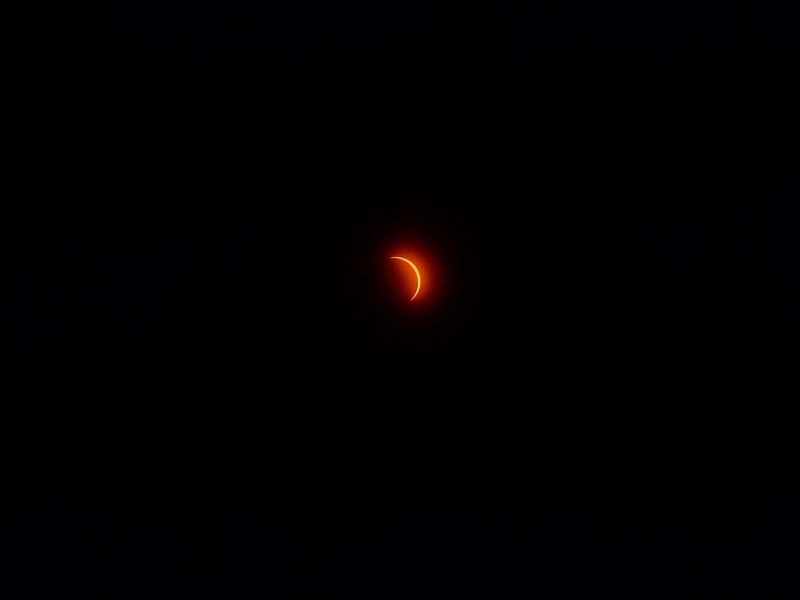
This is my favorite picture. My photos of the first phase of the eclipse didn’t turn out very well, but I got better during the second phase.
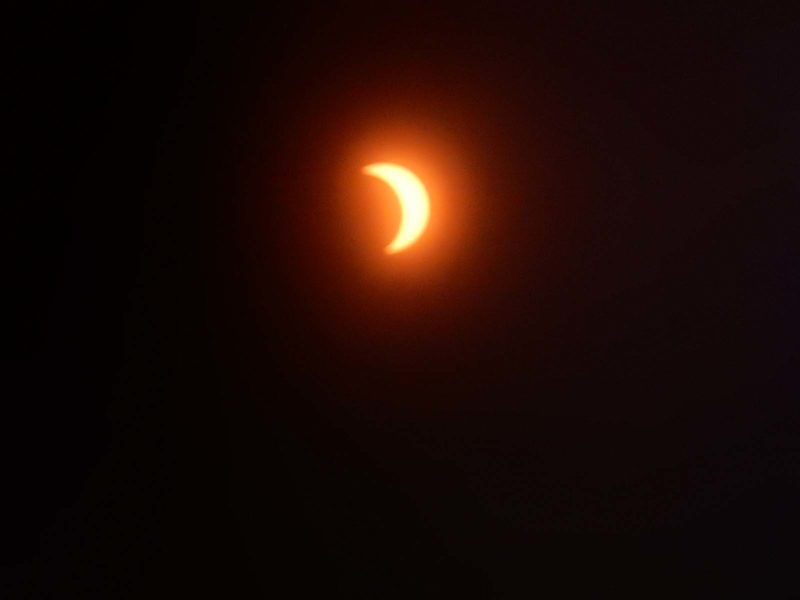
The second phase is about half over at this point.
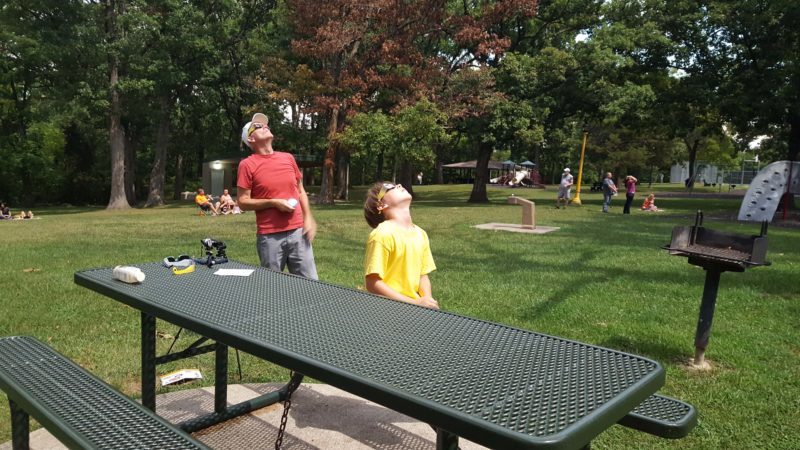
Ted and Dylan, checking out the progress of the eclipse.
We were all glad we made the call to go to Warrenton and we all agreed it was an event worth watching. Yes, good times with the family. We should do it again in Carbondale, IL for the next total solar eclipse in 2024.